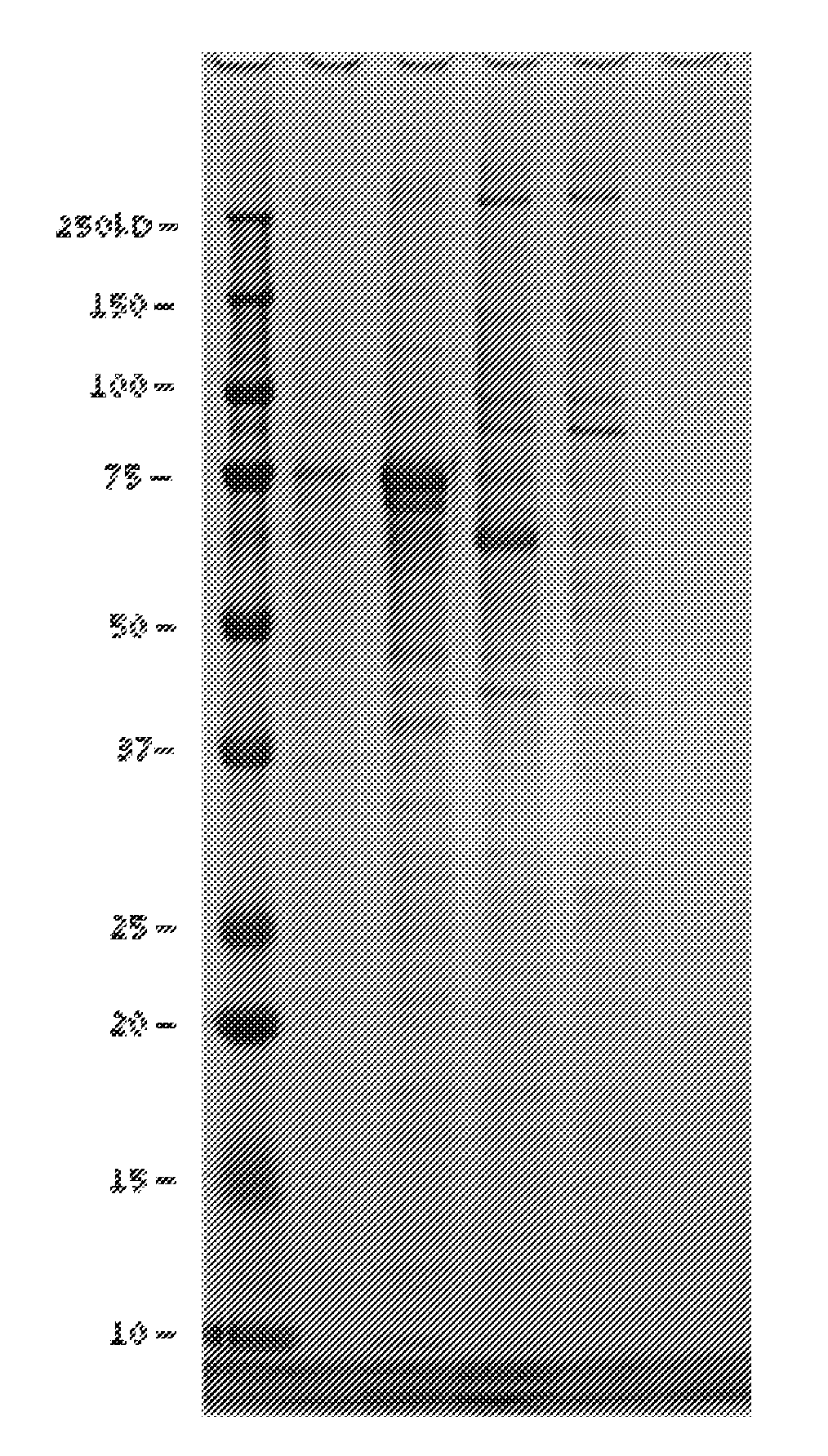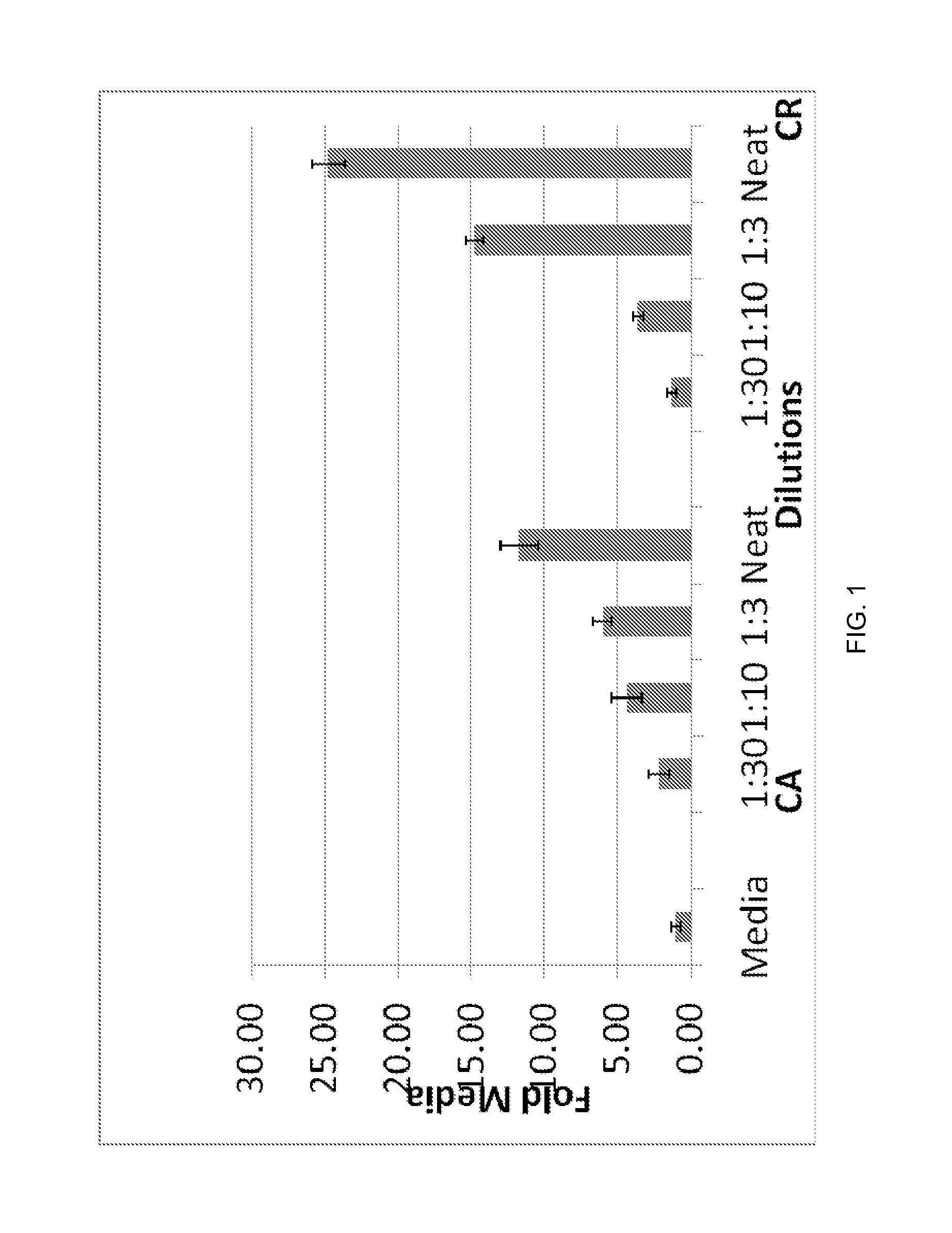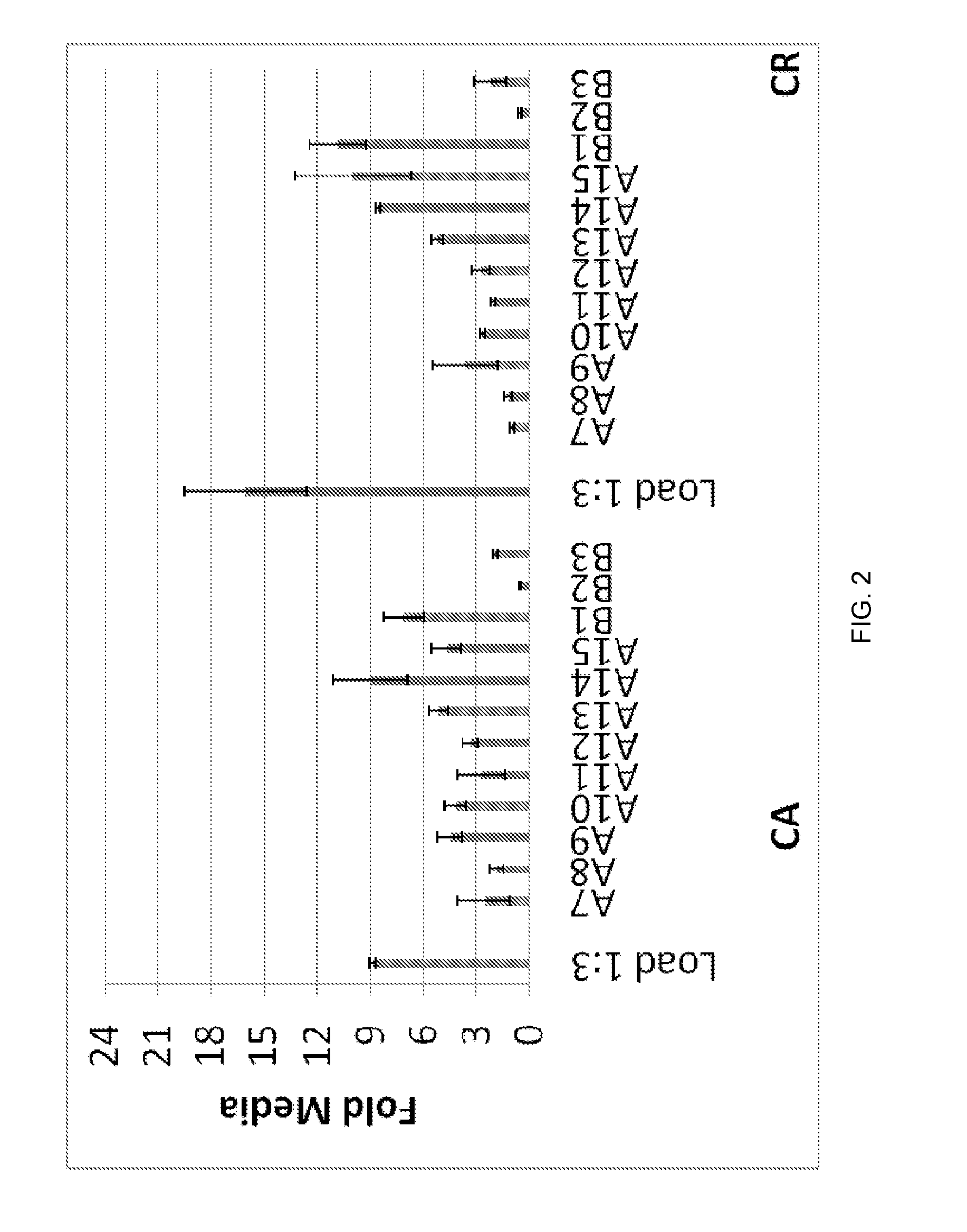Methods of modulating the negative chemotaxis of immune cells
a technology of immune cells and negative chemotaxis, applied in the direction of immunological disorders, drug compositions, peptides, etc., can solve the problem of solid tumor cells not being able to escap
- Summary
- Abstract
- Description
- Claims
- Application Information
AI Technical Summary
Benefits of technology
Problems solved by technology
Method used
Image
Examples
example 1
Identification of Modulators of Cell Migration Present in Tumor Environments
[0105]Objective: To identify the agents present in tumor microenvironments that have the ability to modulate the migration of immune cell subsets.
Materials and Methods:
[0106]Cystic fluid samples: Fluids from ovarian carcinoma patients were collected during surgical procedures under a signed informed consent. Fluids were centrifuged to remove the debris. The supernatants were supplemented with cocktail of protease inhibitors and divided into aliquots and stored at −80 C till further processing. Samples were evaluated to study their effects on migration of neutrophils in transwell migration assays in Boyden chambers for their chemoattraction (CA) and chemorepulsion (CR) activities as described below.
[0107]Chromatographic separation: Cystic fluid (0.2 ml at 65 mg / ml) was loaded on a Superdex 200 10 / 300 GL column (GE Healthcare) and fractionated at the rate of 0.5 ml / min. Fractions (1 ml) were collected in tubes...
example 2
Identification of Modulators of Cell Migration Present in Mammalian Cancer Cell Line Supernatants
[0136]Objective: To identify the agents present in mammalian cancer cell lines that have the ability to modulate the migration of immune cell subsets.
Materials and Methods:
Mammalian Cancer Cell Lines:
[0137]Cancer cell lines were cultured in serum containing media until desired confluence is reached. Culture conditions were switched to serum-free media and supernatants collected everyday up to certain number of days. The supernatants were supplemented with cocktail of protease inhibitors and divided into aliquots and stored at −80 C until further processing. Depending on the volume of culture supernatant, they were either concentrated 10 times or evaluated unconcentrated to study their effects on neutrophil migration Boyden chamber transwell migration assays.
[0138]Supernatants were further concentrated and loaded on a Superdex 200 10 / 300 GL column (GE Healthcare...
example 3
Chemorepellant Proteins Identified in Multiple Chemorepellant Fractions
[0193]Table 10 shows chemorepellant proteins that were isolated from chemorepellant fractions of at least two cells or from a cell line and ovarian cystic fluid (as indicated by an “X”) and were shown to induce chemorepulsion of neutrophils in their purified form (as described in Examples 1 and 2). For example, Actin was identified in the chemorepulsive fractions isolated from the supernatant of SF-539 cells and from ovarian cystic fluid sample (described in Example 1).
TABLE 10Proteins identified in the chemorepellant fractions ofat least two cell linesCell Line / TumorProteins isolatedCRL-PC-SF-786-OCI-from supernatants19783539HepG2OACHN856ACTA2 (Actin,XXaortic smoothmuscle)B2M (beta-2XXXmicroglobulinprecursor)CFL1 (Cofilin-1)XXCSTBXX(cystatin B)CYCSXXX(cytochrome C)LGAL3XX(galectin-3)MIF (macrophageXXmigrationinhibitory factor)PARK7 ProteinXXXDJ-1PSPHXX(phosphoserinephosphatase)SOD1XX(superoxidedismutaseTXNXX(thi...
PUM
| Property | Measurement | Unit |
|---|---|---|
| Fraction | aaaaa | aaaaa |
| Fraction | aaaaa | aaaaa |
| Fraction | aaaaa | aaaaa |
Abstract
Description
Claims
Application Information
 Login to View More
Login to View More - R&D
- Intellectual Property
- Life Sciences
- Materials
- Tech Scout
- Unparalleled Data Quality
- Higher Quality Content
- 60% Fewer Hallucinations
Browse by: Latest US Patents, China's latest patents, Technical Efficacy Thesaurus, Application Domain, Technology Topic, Popular Technical Reports.
© 2025 PatSnap. All rights reserved.Legal|Privacy policy|Modern Slavery Act Transparency Statement|Sitemap|About US| Contact US: help@patsnap.com



